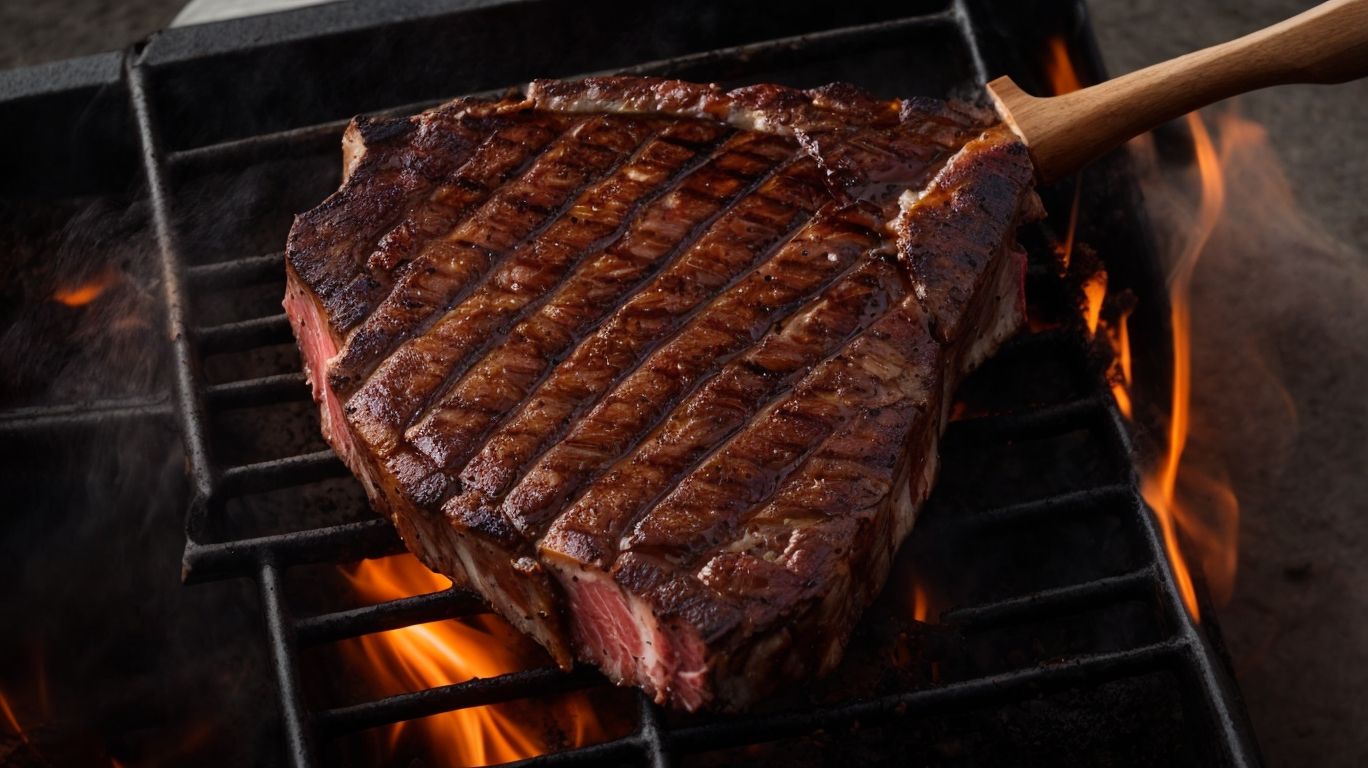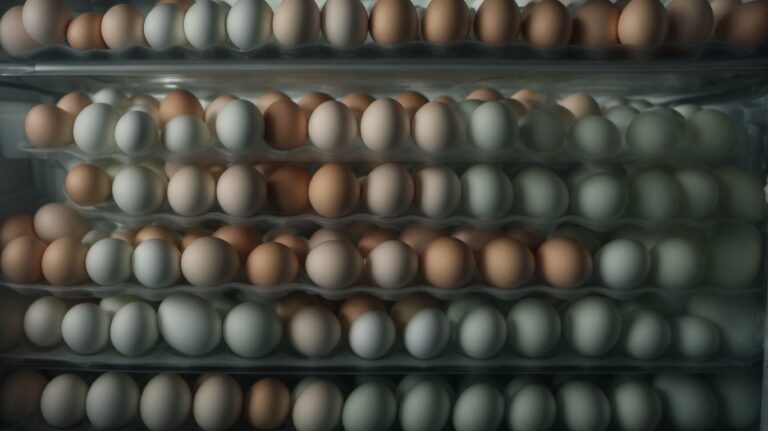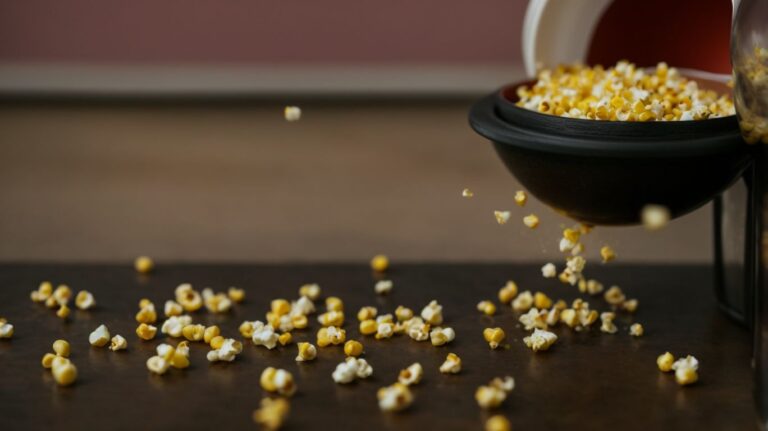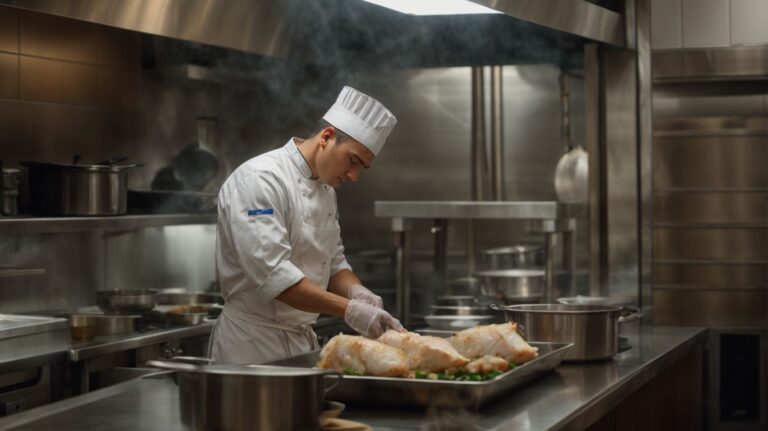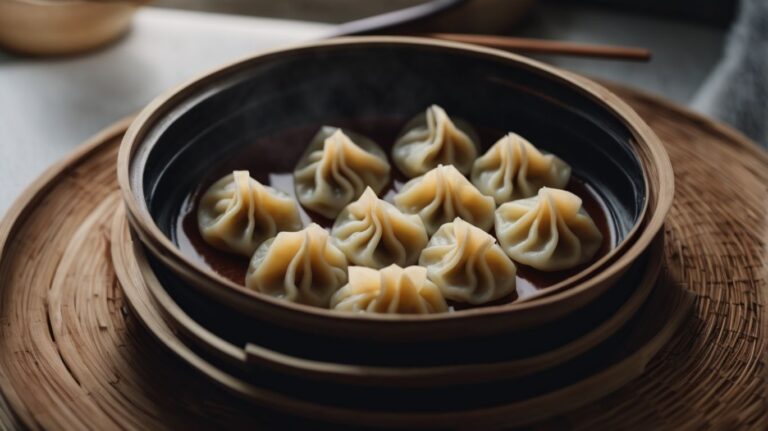How to Cook Tomahawk Steak Without Thermometer?
Are you looking to cook the perfect Tomahawk steak but don’t have a meat thermometer on hand?
In this article, we will explore the traditional cooking method for Tomahawk steak and why you may want to cook it without a thermometer. We will also discuss different cooking methods, key factors to consider, how to tell if the steak is cooked, and some tips for achieving the perfect Tomahawk steak without a thermometer.
Let’s get cooking!
Key Takeaways:
What is a Tomahawk Steak?
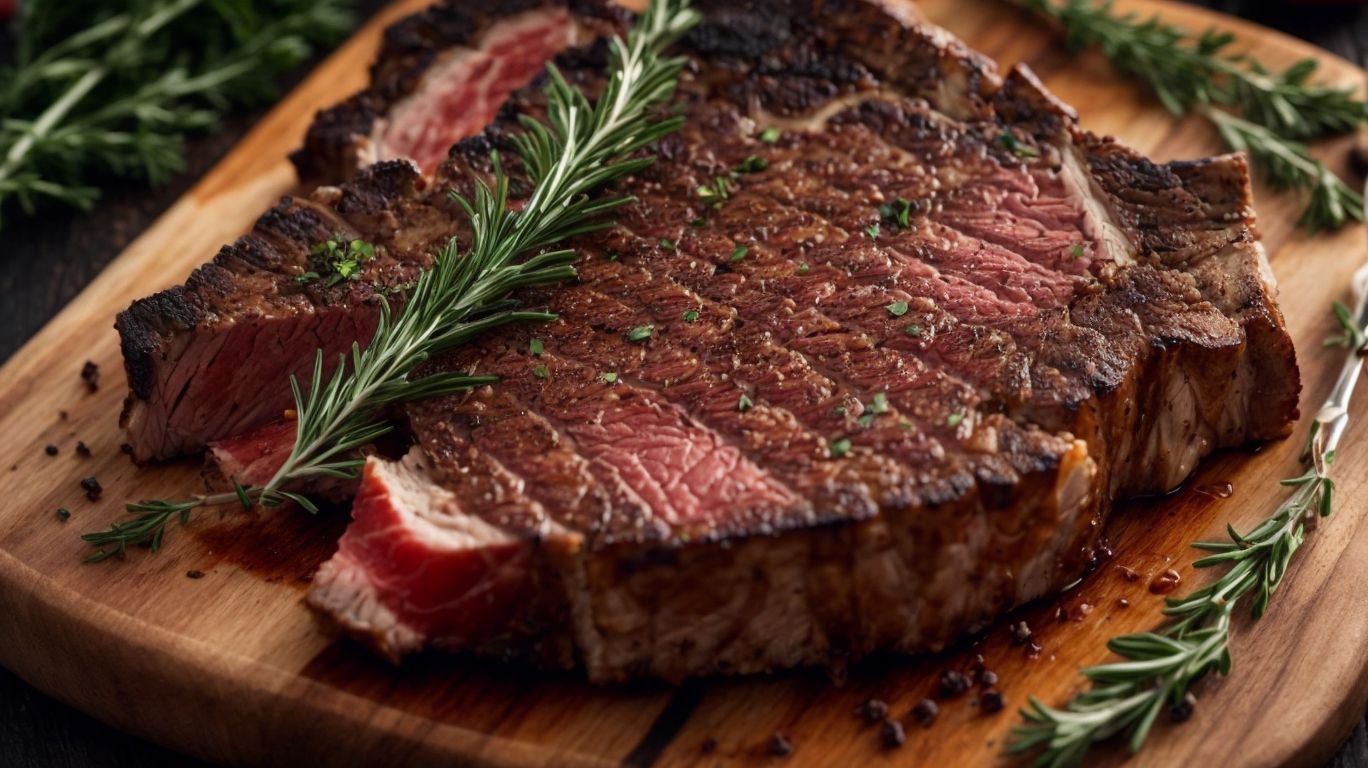
Credits: Poormet.Com – Andrew Carter
A Tomahawk Steak is a bone-in ribeye steak known for its impressive presentation, featuring a long rib bone that adds flavor and aesthetic appeal to the cut.
What sets the Tomahawk Steak apart is not just its bone-in nature but also its well-known marbling, having a perfect balance of fat marbled within the meat, enhancing both flavor and tenderness. This marbling, often referred to as intramuscular fat, contributes to the steak’s rich, juicy texture and robust taste profile, making it a favorite among steak enthusiasts. When cooked to perfection, the marbled fat melts, infusing the meat with succulent flavors, ensuring a delightful dining experience.
Why Cook Tomahawk Steak Without a Thermometer?
Cooking a Tomahawk Steak without a thermometer can be preferred for those who enjoy the art of grilling or searing by intuition, relying on experience and visual cues to determine the steak’s doneness.
This approach involves a deep understanding of the cooking process and allows you to rely on your senses to achieve that perfect medium-rare or medium doneness.
- When searing your Tomahawk, pay attention to the sizzle as the meat hits the hot grill or pan – the louder the sizzle, the better the initial sear.
- As you observe the edges of the steak, look for caramelization forming, indicating a flavorful crust developing.
- The touch test can be your ally – gently press the surface of the steak with your finger for the level of bounce back to estimate doneness.
Traditional Cooking Method
The traditional cooking method for a Tomahawk Steak involves searing the meat over high heat to develop a flavorful crust before finishing it in the oven or on the grill to achieve the desired level of doneness.
In terms of searing the Tomahawk Steak, many chefs swear by the good ol’ cast iron skillet. The high heat retention and even distribution of heat make it ideal for achieving that perfect sear. Heat a cast iron skillet over high heat until it’s smoking hot, then add a small amount of oil to prevent sticking. Carefully place the seasoned steak in the skillet without overcrowding. Let it sizzle undisturbed for a few minutes to allow the Maillard reaction to work its magic.
- After achieving a beautiful sear on both sides, you can transfer the steak to a preheated oven to finish cooking. This allows for gentle heat circulation around the meat, ensuring even cooking and retention of juices.
- Alternatively, if you prefer the smoky flavor imparted by grilling, you can move the seared steak to a preheated grill. Pay attention to the temperature control to avoid flare-ups that can char the exterior before the interior is done.
Patience is key in this process; resist the urge to cut into the steak immediately to let the juices redistribute for a moist and flavorful outcome.
Difficulty in Using a Thermometer
Using a thermometer for a Tomahawk Steak can pose challenges due to the thickness of the cut and the bone-in nature, making it harder to accurately measure the internal temperature for precise doneness.
One of the main issues arises from the sheer thickness of a Tomahawk Steak; its size can obstruct the thermometer from reaching the center where the temperature needs to be gauged most accurately. The bone-in design presents further complications as bones conduct heat differently than meat, affecting the accuracy of temperature readings. When considering cooking techniques like searing or reverse searing, it’s vital to adjust for the bone’s impact on heat distribution, which can lead to varied doneness levels within the same steak. Mastering the art of using a thermometer with a Tomahawk Steak involves understanding these complexities and making adjustments accordingly.
What are the Different Ways to Cook Tomahawk Steak Without a Thermometer?
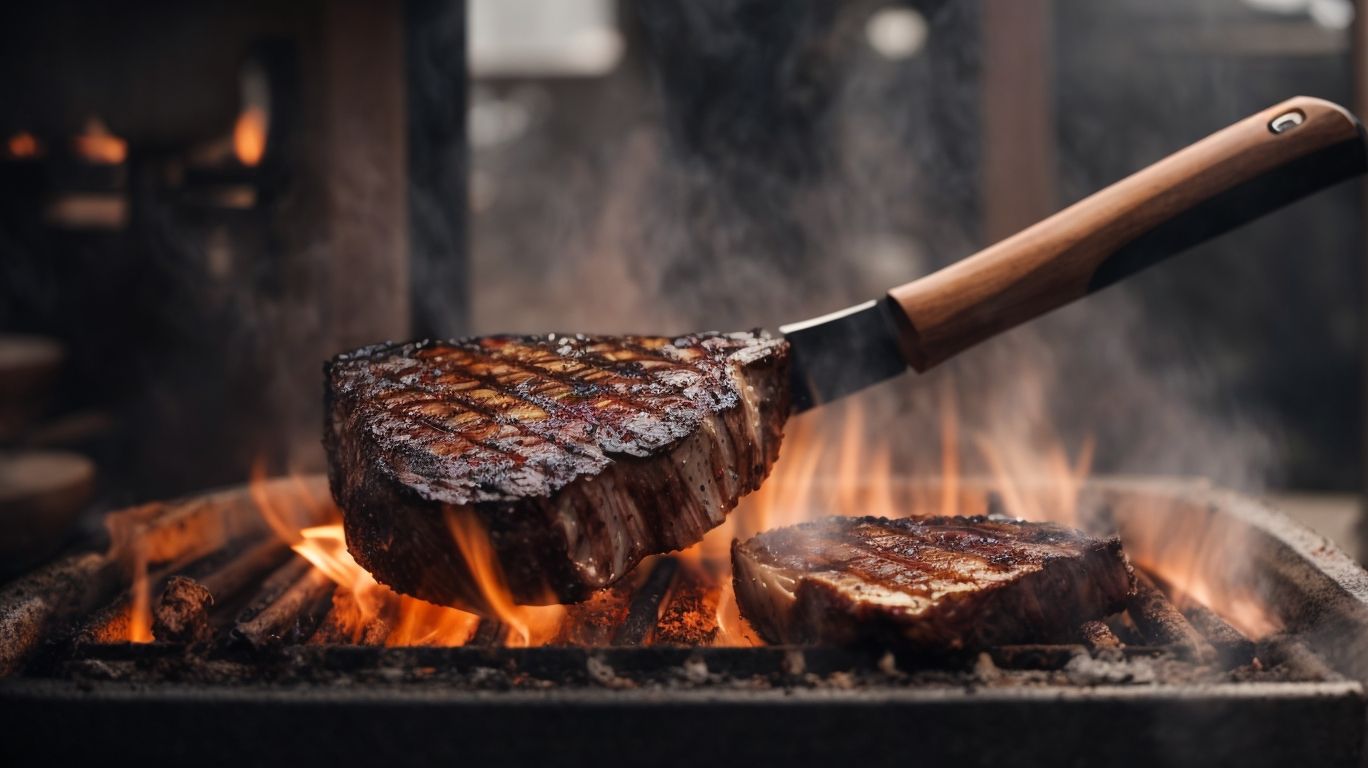
Credits: Poormet.Com – Mark Lee
There are several methods to cook a Tomahawk Steak without relying on a thermometer, including grilling, broiling, and pan-searing, each offering unique flavors and textures to the final dish.
In terms of grilling a Tomahawk Steak, you’re looking at using high direct heat to sear the outside while keeping the inside juicy and tender. This method imparts a wonderful smoky flavor that many steak enthusiasts swear by.
On the other hand, broiling involves cooking the steak under high, direct heat in the oven, giving it a nice charred crust while maintaining a medium-rare center.
Pan-searing requires a hot skillet to get that perfect caramelization on the outside, locking in those rich juices and flavors.
Grilling Method
Grilling a Tomahawk Steak involves searing the meat over high heat on a grill to create a caramelized crust, followed by indirect heat cooking to achieve even doneness throughout the steak.
When grilling a Tomahawk Steak, it’s crucial to preheat your grill to around 450-500°F for the initial sear. This high heat helps to lock in the juices and flavor of the steak while creating those beautiful charred grill marks that enhance the overall presentation.
After the searing stage, you’ll need to adjust your grill to a lower temperature, typically around 250-300°F, for the indirect heat cooking method. This slower and gentler cooking process ensures that the steak cooks evenly without burning the exterior.
For this process, you might consider using a meat thermometer to monitor the internal temperature and ensure your Tomahawk Steak reaches the desired level of doneness, whether it’s rare, medium-rare, medium, or well-done.
Broiling Method
Broiling a Tomahawk Steak involves placing the steak under high heat in an oven to achieve a charred exterior and a juicy interior, mimicking the effects of grilling in a controlled environment.
When broiling a Tomahawk Steak, the steak is typically seasoned with a mix of salt, pepper, and other spices to enhance its flavor profile during the cooking process. Temperature control is crucial in this method to ensure that the steak cooks evenly and reaches the desired level of doneness. Preheating the oven is essential to get the high heat needed to sear the exterior of the steak quickly.
Placing the steak on the top rack of the oven allows it to be close to the broiler element, which helps in achieving that perfect char on the outside. It’s advised to keep an eye on the steak while broiling to prevent it from overcooking and ensure it retains its juiciness. Some chefs recommend flipping the steak halfway through the broiling process to ensure even cooking on both sides.
Pan-searing Method
Pan-searing a Tomahawk Steak involves searing the meat in a hot pan with butter or oil to develop a flavorful crust before finishing it in the oven to ensure even cooking and optimal doneness.
This method allows for a quick and intense heat transfer that caramelizes the surface of the steak, creating those coveted Maillard reactions responsible for the rich, complex flavors.
When searing, it’s crucial to pat the steak dry with paper towels first to promote optimal browning. To enhance the flavor profile, you can add herbs like rosemary or thyme to the pan during searing, infusing the steak with aromatic notes. Adjusting the heat and timing while searing can help control the level of doneness and texture of the crust.
What are the Key Factors to Consider when Cooking Tomahawk Steak Without a Thermometer?
When cooking a Tomahawk Steak without a thermometer, important factors to consider include the thickness of the steak, estimated cooking time, visual cues for doneness, and experience-based judgment to achieve the desired results.
Thickness plays a significant role in determining the cooking time as thicker steaks require more time to reach the preferred level of doneness, while thinner cuts cook faster.
Visual cues such as the color change from raw to cooked, the firmness of the meat, and the juices running clear are crucial indicators to gauge doneness without a thermometer.
Experience in cooking steaks can greatly aid in achieving the perfect level of doneness by relying on knowledge gained from previous cooking attempts and tasting for desired texture and flavor.
Thickness of the Steak
The thickness of a Tomahawk Steak greatly influences the cooking time and temperature required to achieve a tender and juicy result, with thicker cuts typically needing longer cooking durations for proper doneness.
When you opt for a thicker Tomahawk Steak, it’s essential to consider that the heat needs to penetrate through a larger mass of meat, affecting the overall cooking process.
A thicker cut also means that the exterior searing, which adds a delicious crust to the steak, must be balanced with ensuring the center cooks to the desired temperature without overcooking.
Conversely, a thinner Tomahawk Steak may cook faster but can be prone to drying out if not monitored carefully during the cooking process.
Cooking Time
Determining the appropriate cooking time for a Tomahawk Steak involves considering factors such as thickness, desired doneness, and cooking method, with variations in cooking time affecting the steak’s final texture and flavor.
In terms of thickness, thicker cuts of steak require longer cooking times to ensure that the heat penetrates to the center while thinner cuts cook more quickly but may risk overcooking.
Achieving optimal doneness levels, whether rare, medium-rare, medium, or well-done, also plays a crucial role in determining the cooking time to bring out the steak’s best taste and texture. The chosen cooking technique, whether grilling, broiling, or pan-searing, influences how heat is applied to the steak, impacting the overall cooking time needed.
Internal Temperature and Doneness
Achieving the right internal temperature for a Tomahawk Steak is crucial for determining its doneness, with visual cues and touch tests serving as alternative methods to assess the steak’s readiness without relying on a thermometer.
Internal temperature plays a significant role in the cooking process, as it directly impacts the steak’s texture and flavor. By monitoring the steak’s internal temperature, chefs can ensure that it reaches the desired level of doneness – whether rare, medium-rare, medium, or well-done. Visual indicators, such as the color of the meat and the juices running clear, can provide valuable insights into the steak’s readiness. Utilizing touch tests, like the finger test to gauge firmness, can aid in determining the steak’s doneness with precision.
How to Tell if a Tomahawk Steak is Cooked Without a Thermometer?
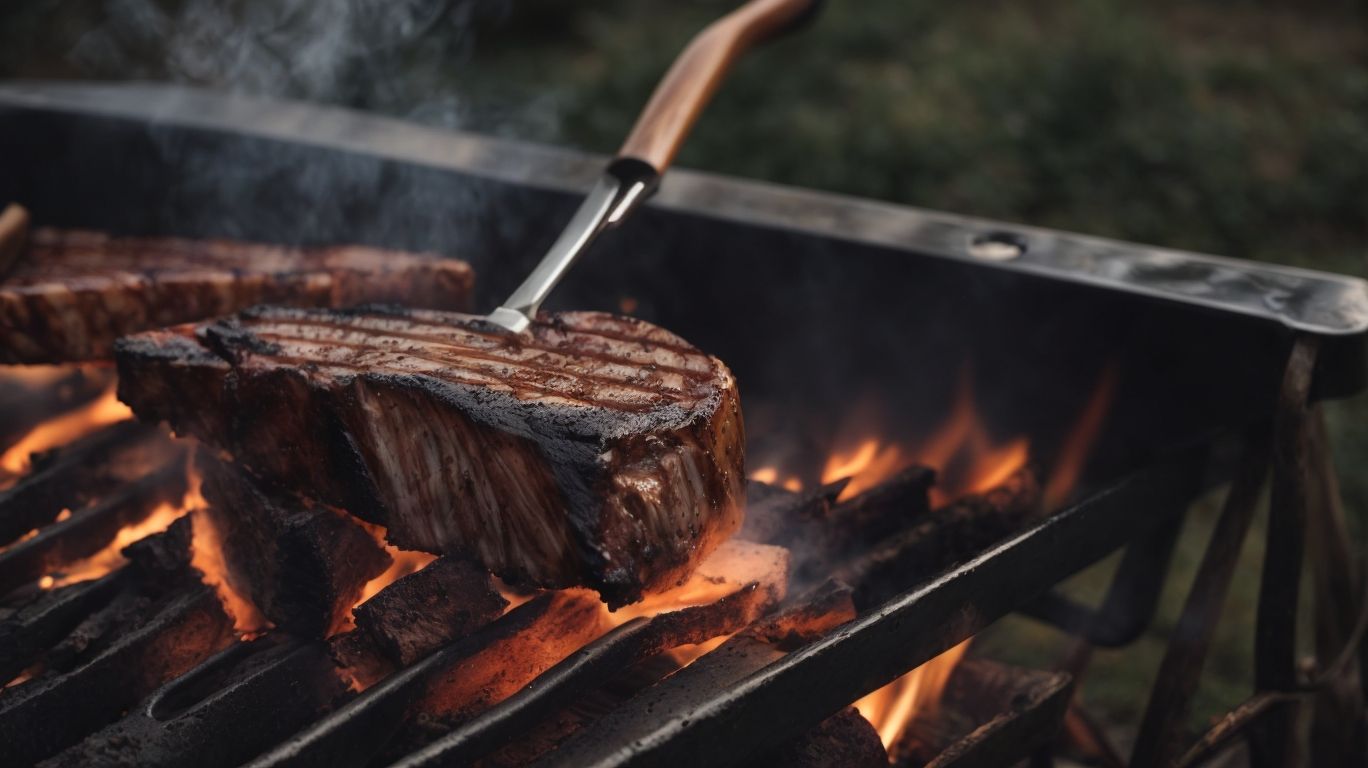
Credits: Poormet.Com – Frank Clark
Determining the doneness of a Tomahawk Steak without a thermometer can be achieved through visual cues like color changes, a touch test to assess firmness, and the use of a meat thermometer as an alternative tool for temperature monitoring.
When assessing the color of a Tomahawk Steak, a useful guideline is that a rare steak will have a bright red center, medium-rare will be a slightly darker red with a hint of pink, medium steak will have more pink, and well-done will be mostly brown.
Gauging the firmness of the steak through a touch test can provide insight into its doneness. A rare steak feels very soft, medium-rare slightly firmer with a bit of springiness, medium is firmer but still yielding, and well-done is quite firm.
If unsure, using a meat thermometer as a backup method to check the internal temperature can offer precise readings for perfect doneness, with medium-rare typically around 130-135°F, medium at 140-145°F, and well-done at 160°F and above.
Visual Cues
Visual cues such as color changes in the surface of a Tomahawk Steak can provide insights into its doneness level, with a well-seared exterior and slightly pink interior indicating a perfect medium-rare result.
Texture plays a crucial role in gauging the steak’s readiness. When lightly pressing on the surface, a rare steak will feel very soft, while a medium-rare steak will have some resistance but still yield to pressure. As the steak cooks further, the surface firms up, gradually progressing from medium to well-done. This tactile feedback, combined with the visual changes, allows chefs and home cooks alike to achieve the desired level of doneness without the need for precise measurements. Mastering these visual and textural cues can elevate your steak-cooking game to a whole new level.
Touch Test Method
Conducting a touch test on a Tomahawk Steak involves assessing the firmness of the meat to gauge its doneness, with different levels of resistance indicating varying degrees of cooking from rare to well-done.
When applying the touch test, a rare Tomahawk Steak will feel soft and have a lot of give when pressed with your fingertips. In contrast, a medium-rare steak will offer a slight bounce back, suggesting it’s getting closer to the ideal doneness.
- As you move towards medium, the steak will feel firmer but still yield a bit under pressure; this signals that it’s reaching the desired medium cook. A well-done steak will feel very firm, lacking in give, indicating that it’s thoroughly cooked.
Remember, mastering the touch test takes practice, but it’s a handy skill for achieving that perfect steak every time.”
Meat Thermometer Alternative
Using a meat thermometer as an alternative tool for checking the internal temperature of a Tomahawk Steak can provide precise readings and ensure accurate doneness without relying solely on visual or tactile methods.
When cooking a beautiful Tomahawk Steak, the thickness of the cut can often make it tricky to gauge the exact internal temperature. This is where a high-quality meat thermometer becomes invaluable. By inserting the thermometer probe into the thickest part of the steak, you can get an accurate reading of how well it’s cooked inside. This method eliminates any guesswork and helps you achieve that perfect medium rare or medium doneness consistently.
What are Some Tips for Cooking the Perfect Tomahawk Steak Without a Thermometer?
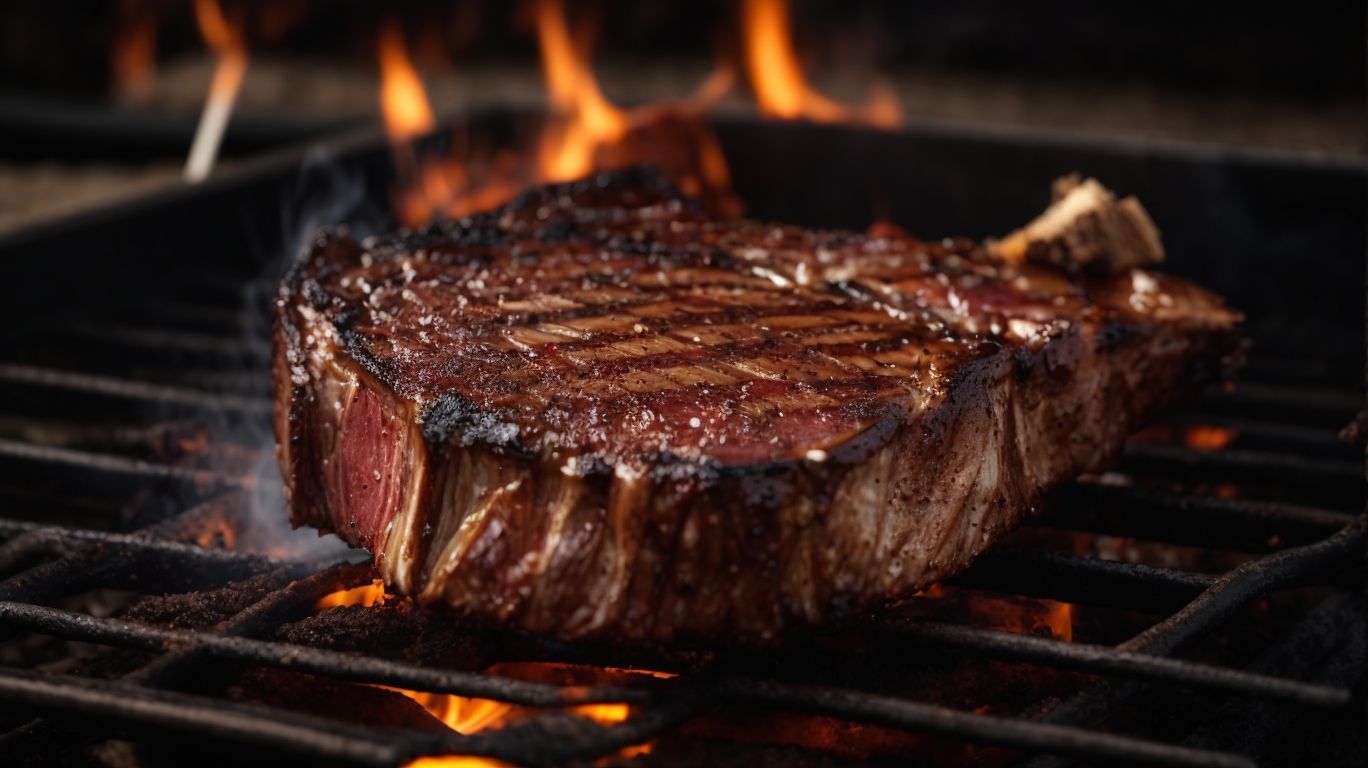
Credits: Poormet.Com – Steven Jones
To cook the perfect Tomahawk Steak without a thermometer, key tips include using high heat for searing, allowing the steak to rest before cutting, and experimenting with seasoning and flavoring options to enhance the overall taste experience.
In terms of searing the steak, make sure your pan or grill is blazing hot to achieve that delicious crust while sealing in the juices. Resting the steak after cooking is crucial as it allows the juices to redistribute throughout the meat, ensuring a juicy and tender bite with every slice.
For seasoning, consider options like a simple salt and pepper rub for a classic flavor profile or get creative with a blend of garlic, rosemary, and thyme for an aromatic twist. The key is to experiment and find what works best for your palate.
Use High Heat
Utilizing high heat when cooking a Tomahawk Steak is essential for achieving a caramelized crust and locking in juices, whether through grilling, broiling, or pan-searing methods.
When subjected to high heat, the Maillard reaction, responsible for creating that delightful crust on the steak’s surface, occurs rapidly. This reaction involves the browning of amino acids and sugars, forming complex flavor compounds that give the steak its rich taste profile.
Enhanced flavor is not the only benefit of using high heat; it also contributes to the texture of the steak, providing a contrast between the crispy exterior and the tender interior.
Rest the Steak Before Cutting
Allowing the Tomahawk Steak to rest before cutting is crucial for redistributing juices and ensuring optimal tenderness, with a recommended resting time of 5-10 minutes to enhance the eating experience.
During this resting period, the steak continues to cook internally, and the juices, which tend to move towards the center during the cooking process, have a chance to redistribute throughout the meat. This redistribution of juices helps in creating a more even and moist texture in each bite, guaranteeing a flavorful and succulent experience.
As the steak rests, the fibers within the meat gradually relax, resulting in increased tenderness when it comes time to slice and serve the Tomahawk. Allowing this short but important rest period also helps in retaining the steak’s natural juiciness, ensuring that every bite is as flavorful and satisfying as possible.
Seasoning and Flavoring Options
Experimenting with various seasoning and flavoring options can elevate the taste profile of a Tomahawk Steak, whether using simple salt and pepper blends or exploring more complex marinades and rubs for added depth of flavor.
One popular seasoning blend for Tomahawk Steaks is a mixture of smoked paprika, garlic powder, and brown sugar, creating a sweet and savory crust when seared.
- Herb-infused olive oils can also be brushed onto the steak before grilling, imparting a fragrant herbaceous note to the meat.
- For those seeking a smoky flavor, wood chips can be used while grilling the steak, infusing it with a subtle smokiness.
- Citrus-based marinades or rubs with lemon zest and herbs like thyme and rosemary can add a refreshing zing to the steak’s taste profile.
Conclusion
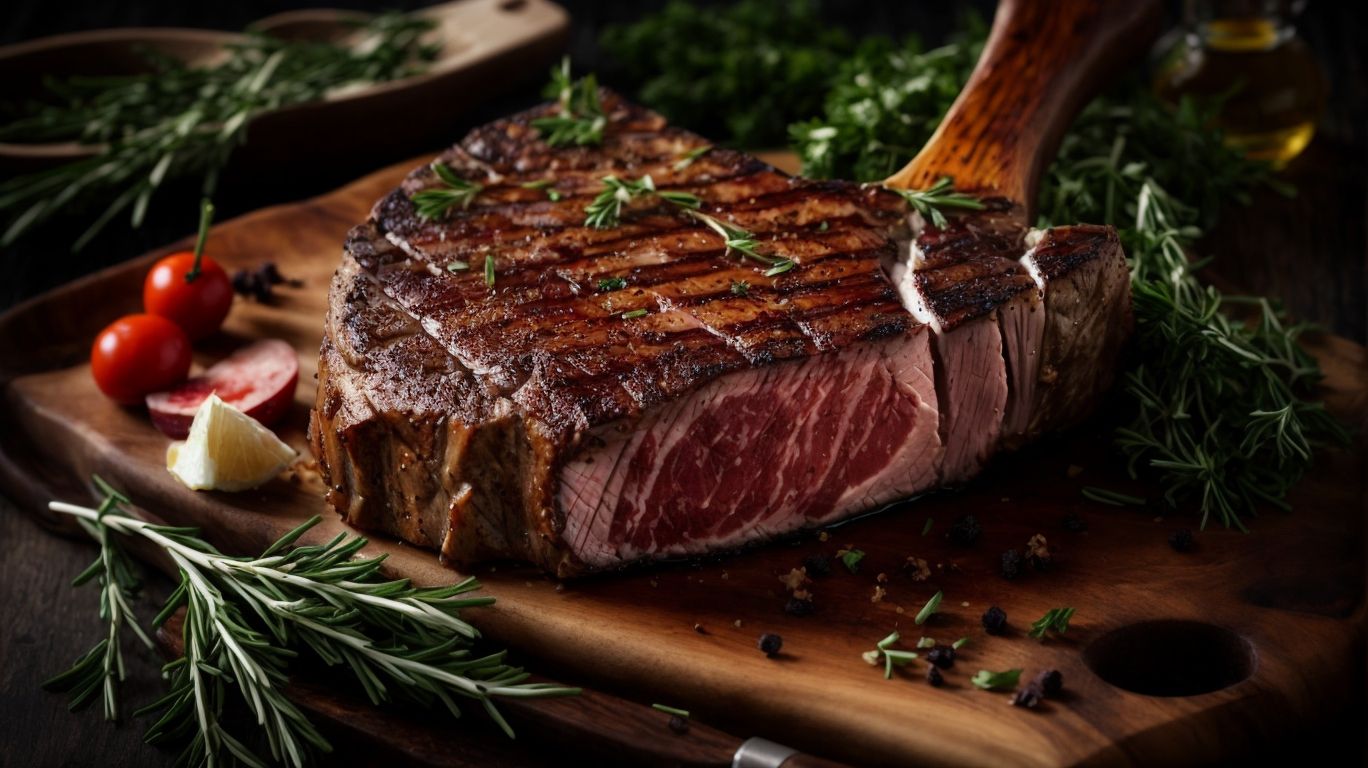
Credits: Poormet.Com – Austin Hall
Mastering the art of cooking a Tomahawk Steak without relying on a thermometer requires a blend of experience, visual judgment, and attention to key cooking principles to achieve the perfect balance of flavor, texture, and doneness.
Understanding the importance of skillful cooking techniques is paramount when preparing this premium cut of meat. Seasoning the steak generously with salt and pepper prior to cooking helps to enhance its natural flavors and create a delicious crust. Allowing the steak to come to room temperature before cooking ensures even cooking throughout. Performing a sensory assessment by testing the steak’s firmness to touch can indicate the level of doneness. Remembering to consider the thickness of the steak when determining cooking times is also crucial to achieving that perfect medium-rare or your desired level of doneness.

